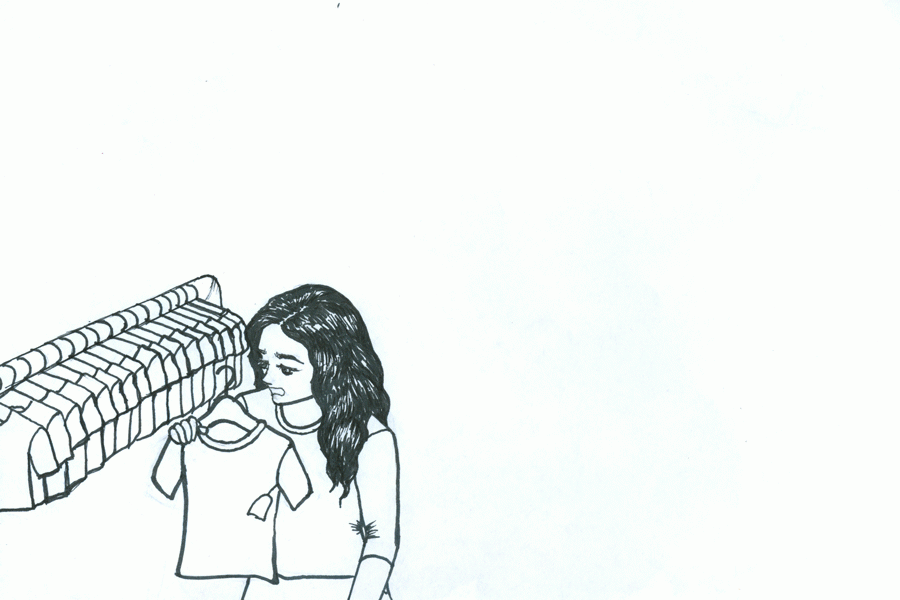One-Size-Fits All Doesn’t Fit Plus-Sized Market
October 4, 2016
The idea of one-size fits all clothing is similar to trying to put different shaped blocks into one uniform slot: It’s not going to work.
This stems from the unrealistic idea that a piece of clothing can fit any person no matter what shape or size they are. But in actuality it only fits the very thin models who advertise these clothes — the ones with the “ideal body type.”
Fashion companies have been subjecting today’s youth to a cookie cutter image of body types for decades. They have always overlooked people who don’t fit the usual model size, which has perpetuated the idea of a “norm.”
The popular clothing brand Brandy Melville has been advertising “one-size-fits-all” to help expand its consumer base, but the clothing’s dimensions are almost identical to what is considered a small. Even though the material is meant to stretch, that doesn’t mean it will truly fit every body type. This brand has since come under fire because the majority of their clothes only come in smaller sizes.
For example, on its website, the only available sizes for a shirt are small and medium, and the pants sizes range from 00 to 5, even though they use relaxed elastic for the waistlines. But when the models who showcase these clothes have 25-inch waists, they don’t show what their projected demographic would like in their clothes.
Other brands, such as Hollister and Abercrombie & Fitch, have also been criticized for favoring smaller sizes. But the majority of teens don’t fit into these sizes. The average teenage girl in America is size 12 or 14, according to various sources. According to Rachel Simmons, co-founder of the Girls Leadership Institute, these companies cause girls to feel like something is wrong with their bodies if they don’t fit into something that is supposed to fit everyone.
Girls of this generation are already put under enough pressure by social media to look like Photoshopped models, causing widespread self-esteem issues that can lead to unhealthy crash diets and eating disorders such as binge eating, anorexia and bulimia.
But some companies have chosen to expand their size ranges.
Mariah Chase, the CEO of the plus-size retailer Eloquii, said that even though many women fit into the plus-sized range, many fashion retailers don’t supply to this market. And even if there is a section for those sizes, there are usually inconsistencies — most companies don’t have the same sizing charts for their clothing, so it’s hard to find the right size without trying on virtually all of the limited selection of merchandise. Due to these problems, many want reform in the fashion world.
Since the plus-sized fashion market is seen as not as profitable, few companies have taken the leap. However, some brands such as H&M and JC Penney have taken steps to make plus-size fashion more available and affordable. According to Chase, their sales have increased as much as 100 percent and they are continuing to beat their own companies’ goals. Because of these sales, many of them have decided to increase their inventory and keep their plus-size sections permanent. By doing this, these brands are paving the way for fashion to reach people of all shapes and sizes instead of trying to have them fit inside a box.
This is important to the youth demographic since teens’ bodies are constantly changing. If these companies’ audiences are meant to be teenagers, they should have clothing that will fit all of them, not just a fraction.


